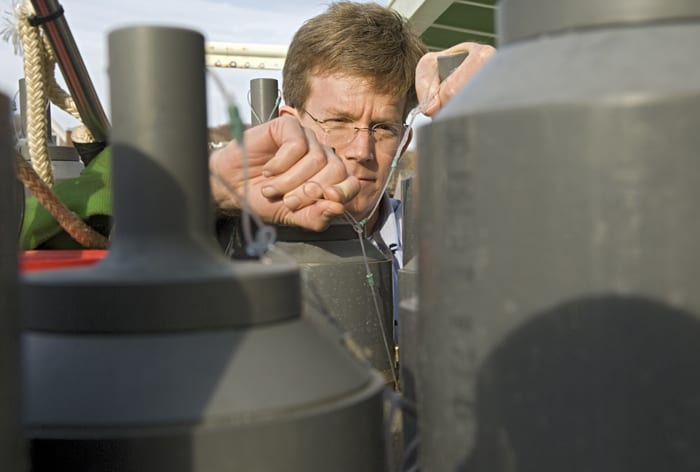WHOI senior scientist Dennis McGillicuddy prepares a CTD (conductivity, temperature, depth) rosette as part of a 2008 cruise to study conditions leading to periodic blooms of harmful algae in New England. Each year, coastal waters of the Gulf of Maine are prone to blooms of the algal species Alexandrium fundyense. Although the algae pose no direct threat to human beings, the toxins they produce can accumulate in organisms such as mussels and clams, which can cause paralytic shellfish poisoning (PSP) in humans who consume them. Learn more about the work Dennis and others have done to develop a forecasting system to help the shellfish industry and environmental managers plan for the annual bloom at this week’s Science Made Public presentation today at 2:30 p.m.(Photo by Tom Kleindinst, Woods Hole Oceanographic Institution )
Image and Visual Licensing
WHOI copyright digital assets (stills and video) contained on this website can be licensed for non-commercial use upon request and approval. Please contact WHOI Digital Assets at images@whoi.edu or (508) 289-2647.
